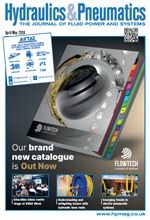Industrial lubricants – the importance of connectivity and collaboration

By Andrew Hepher, vice president technology, Shell.
Today we hear a lot about connectivity within the context of concepts such as the Industrial Internet of Things and Industry 4.0. Indeed, the levels of connectivity that are now regularly discussed can give the impression at face value that we are simply adding more complexity to the equipment we use and rely on in our daily lives. So, it’s important to focus on how this greater complexity is worthwhile and how the intended benefits it offers can be harnessed.
First, let’s consider some background to the increasing need for greater levels of connectivity. We have a growing worldwide population; approximately 7 billion people anticipated to grow to around 10 billion by 2050 – with almost 70% of that population based in cities. To put this in context, this increasing level of required urbanization equates to adding a city like Milan or Prague every week for the next 40 years. That's quite a daunting prospect. Largely as a consequence of this trend, there is also a rising demand for mobility. There are less than 1 billion cars on the planet today, but this will likely rise to around 2 billion by 2060.
In terms of meeting the subsequent energy demand, which could increase by almost 60% by 2060, we are seeing the renewables market growing; with greater demand for photovoltaics etc. However, there will still be a demand for conventional energy sources such as oil and gas. So, the question is how do we meet that energy challenge while not compromising our goals for sustainability and protecting the planet?
Energy efficiency
Clearly, the answers to this challenge have to revolve around energy efficiency. To be more energy efficient we need smarter networks and smarter systems that can ensure we can derive more value from the precious energy we have at our disposal. However, we are seeing the operating conditions of industrial equipment getting harder, and pressure and temperature requirements getting higher. This is all putting more demand on the equipment, not least the lubricants used within it.
Challenges such as these are driving greater complexity within the equipment and systems designed to help plant and machinery operate reliably while also being as energy efficient as possible. These challenges are also driving an increase in the number of equipment manufacturers in the market; companies that are focused on developing solutions that are energy efficient and able to improve equipment reliability. Take an electric drivetrain, for example. The proliferation of transmission options has been notable over the past few years, with many smaller players coming onto the market to compete with the longer-established players. So, major challenges can result in more complexity and a major growth in the types of solutions that are brought to market.
We are also seeing a greater focus on value in terms of services. People are now more interested in total cost of ownership and how services such as real-time monitoring can be used to drive more efficiency out of equipment.
Making changes
But how can true innovation be achieved to its maximum potential in order to optimise machinery performance while also being more energy efficient? Collaboration is the watchword. As the boundaries of society's expectations increase then greater levels of collaboration become ever more paramount. Just think about what is required today to make changes in our industry; the number of people involved in the decision-making process – from governments, NGOs, universities and OEMs, to equipment manufacturers and end customers. All these groups need to work together to fully realise worthwhile changes.
This all comes back to the importance of connectivity. It has been estimated that by 2020 there will be around 20 billion connected devices on the planet. I can look in my smartphone now to find out how much fuel there is in my car sitting on my driveway in the UK, even though I am currently out of the country. I can even check if I locked the car. From a machine reliability and energy efficient point of view, the opportunities this type of connectivity provides is immense.
So, how can all stakeholders drive the pace of progress relentlessly together in order to improve efficiencies across industry? There are some major opportunities through the deployment of things such as data analytics and sensor technology. And the benefits of Industry 4.0 from a connectivity standpoint are now well-documented. So, let’s consider connectivity and collaboration as it pertains to a specific product type – industrial lubrication. An industrial lubricant could be seen as a universal connector in its own right. It is the lifeblood of many types of industrial and mobile equipment; flowing through machinery and protecting moving parts. And through the use of sensors and data analytics, we can gain a deeper insight into how the machinery is performing and indeed how the lubricant is performing on a particular type of machine.
Greater innovation
Any industrial or mobile company will have a business and operational interest in extending the life of the lubricant in their plant and equipment, as well as in needing fewer maintenance intervals in order to minimise downtime. This is what Shell is focused on achieving through greater innovation with respect to the different types of lubricant we can offer for application in a range of machinery used for different tasks in many different environmental conditions. And in order to achieve this, we fully recognise the value of connectivity and collaboration; both in terms of the tools that can make Industry 4.0 a reality, through to the partnership we have with end-customers and OEMs etc.
Through connectivity and collaboration, industrial lubricants can become even more reliable and efficient, helping to meet the many challenges that exist in terms of machinery performance, energy demand and climate change. Through working together, anything is possible.
-
Smart Manufacturing & Engineering Week
05 - 06 June, 2024
NEC, Birmingham -
HILLHEAD 2024
25 June, 2024, 9:00 - 27 June, 2024, 16:00
Hillhead Quarry, Buxton, Derbyshire UK










